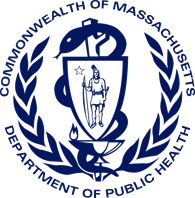- Childhood Lead Poisoning Prevention Program
- Bureau of Environmental Health
As you resume routine pediatric well-visits, the Childhood Lead Poisoning Prevention Program (CLPPP) encourages you to screen children for lead exposure for the following important reasons:
- Children and families are spending more time in their homes during this pandemic, increasing their risk of lead exposure from paint and dust, the primary sources of lead poisoning.
- Many families and property owners are also using this time to initiate Do-It-Yourself home projects or renovations, further increasing the risk of lead exposure.
A preliminary review of the CLPPP blood lead data since March 16, 2020 suggests a significant decrease in lead screenings, by almost 75%. This is not a surprise, as health systems have been focused on pandemic response. However, despite this drop in screenings, the data review shows a sizable increase in rates of newly poisoned children with higher blood lead levels at BLL ≥10 μg/dL when compared to the same timeframe during the previous year.
CLPPP recommends the continuation of regularly scheduled lead screenings. If a child missed a regular screening, please screen them as soon as possible. If you are seeing children under six for other reasons, ask the parent if they live in a home with old windows or chipping paint, or if there has been any recent house painting or renovation work. If they answer yes to either of these questions, consider screening for lead exposure.
As a reminder, all children must be screened:
- At least once between 9-12 months
- Again at age 2
- Again at age 3
- At age 4 if living in a high-risk community
If a child was previously exposed, please re-screen to ensure their blood lead level is declining.
| Lead Level | Next Test |
|---|---|
| Capillary test 5-9 μg/dL | Test child again within 2 months using a venous draw |
| Capillary test 10+ μg/dL | Test child again within 1 week- 1 month using a venous draw |
| 5-9 μg/dL venous | Test child again within 3-6 months |
| 10-14 μg/dL venous | Test child again within 3 months |
| 15-19 μg/dL venous | Test child again within 2 months |
| 20-44 μg/dL venous | Test child again within 1 month |
| 45+ μg/dL venous | At doctor’s discretion, usually in a week |
If you have any questions about lead screenings or CLPPP services, please call us at:
(617) 624-5757 or (800) 532-9571
More information can also be found on our website:
https://www.mass.gov/orgs/childhood-lead-poisoning-prevention-program
